Haiti’s Forgotten Women and Children
The disastrous 2010 earthquake turned the lives of many Haitians into capitalist fodder for the “humanitarian” market.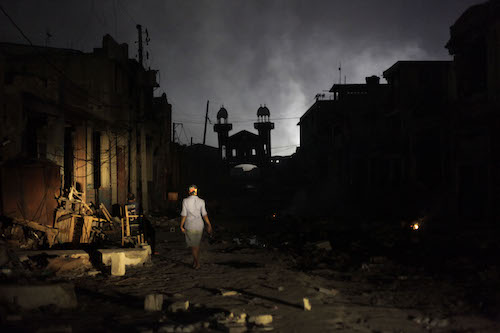 A woman walks through a damaged area in Port-au-Prince in early February 2010—nearly a month after a powerful earthquake hit Haiti on Jan. 12. (Ramon Espinosa / AP)
A woman walks through a damaged area in Port-au-Prince in early February 2010—nearly a month after a powerful earthquake hit Haiti on Jan. 12. (Ramon Espinosa / AP)
I lived in Haiti in 2010, arriving six weeks after the January earthquake. I initially worked at a children’s hospital, where I was assigned to a ward full of toddlers, all but one of whom were female, most of them abandoned. I was to change diapers, feed and bathe the children, and do whatever else the staff nurses needed.
On my third day, a woman from an American nongovernmental organization (NGO) came to our wing and ordered the Haitian nurses about in a troubling manner. She instructed them to prepare the children for photo shoots. She then walked through the ward as a photographer clicked away, while she picked up children and pulled every Princess Diana pose in the book.
I was disturbed by this scene, as were the nurses, who told me that they could not ask this woman to stop, for fear of losing their jobs. So I intervened and reminded her that she was violating U.N. regulations regarding the safety and privacy of the children. The woman explained that she planned to use these pictures as promotional material for her orphanage in Cuernavaca, Mexico. I reminded her again that these children were considered refugees and that she had no right to take their photos. Long story short, that was the shortest-lived job I ever had. I was shown the door two hours later.
This experience was one of many reminders of how the lives of Haitian children were turned into capitalist fodder for the “humanitarian” market. I would also learn in the following weeks that this hospital, although it provided some useful services for children, was caught up in questionable alliances with fake orphanages that trafficked children out of the country, especially in the months following the earthquake, when adoptions were hastened by the government. This same post-earthquake adoption program was later qualified as “forced migration” in the 2012 edition of the annual World Disasters Report.
Before the 2010 earthquake, UNICEF estimates that 50,000 Haitian children were living in child care institutions. Between 70 percent and 90 percent still have one living parent. The word “orphan” in Haiti was a common misnomer, because most children in these orphanages had been abandoned or had a parent who was economically unable to care for them. Many were placed into institutions by families who hoped that their child would be adopted and raised in a wealthier Western nation. This attitude is not uncommon in Haiti, and in the months following the earthquake, there was an uptick in the number of children who were dropped off at orphanages, children’s hospitals and churches, as this was one of the only options for the country’s most economically disenfranchised. Among the children abandoned to orphanages and internationally adopted, females make up the largest percentage of trafficked children. And the vast majority of these female children are trafficked for the sole purpose of rape.
Children in Haiti are viewed as exploitable—be it by the NGOs or the U.N., which are ready to use their faces as invitations for donors to send money. Many male NGO workers have been found to have exploited women sexually in return for food and shelter, a fact made public in 2018 with the Oxfam scandal. What is less well-known is that there are men who specifically enter the field of humanitarian aid in order to gain easy access to children. And a remarkable number of them succeed in exploiting these children. Outside the vast network of development agencies, there is a wider system lurking in the most economically deprived areas of the country where traffickers have established themselves. Female children are most at risk in Haiti, and the presence of NGOs has not made them any safer. If anything, it has exacerbated the situation.
To complicate matters more is Haiti’s history with restavèk (derived from the French “reste avec,” meaning “to stay with”), a form of slavery in which children are sent to relatives or strangers by their parents, ostensibly to gain an education they would not otherwise have. Under these arrangements, in exchange for room and board, education and/or money, the child is required to work, often for excessively long hours and at laborious chores. In fact, most of these children never see the inside of a classroom. Girls make up 65 percent of restavèks, and are overwhelmingly the primary victims of physical and sexual violence, in addition to being trafficked for international sexual exploitation. Studies show that 30 percent of all Haitians have restavèks working for them and that 16 percent of Haitian children are placed as restavèks. In Port-au-Prince’s Cite Soleil district, 44 percent of children have been placed as restavèks. While there are no official figures on the number of restavèks in Haiti, their numbers are estimated at between 150,000 and 500,000; the NGO Restavek Freedom estimates the number at 300,000. In a 2000 study in which Haitian household heads were asked if unrelated children in their homes were restavèk children, 4 percent of all children between the ages of 5 and 14 were identified as restavèks; girls were twice as likely to be restavèks as boys. Urban areas had twice the rate of restavèks as rural areas.
The NGOs, the U.N. agencies, the foreigners seeking to adopt a Haitian child and the Haitian parents who send their children away as restavèks believe that their plans offer a better life for the children. But the reality is different. In the cases of many international adoptions, the paperwork has served as a cover for trafficking. Many of these children were not placed in families but were trafficked and made to work on Dominican sugarcane plantations, and many female children were prostituted to tourists all over the country. There are even cases of these children’s bodies used for organ harvesting.
The NGOs are buttressed by a multibillion-dollar market that uses private money to influence public and political policy, inevitably destabilizing the country’s infrastructures while doing nothing to strengthen the safeguarding of children. So the notion that children within Haiti are more “in danger” is a lie successfully spun by the very agencies and individuals in whose economic interest it is to move these children either outside of Haiti or into the most precarious of social conditions.
No longer working for the children’s hospital, I found housing with three local teachers who had a luxurious villa in one of the most expensive parts of Port-au-Prince. I rented a sleeping space on the floor in the hallway, along with a dozen other aid workers. The teachers had been raised within the pervasive NGO system from childhood, each having been sponsored by a German family through the NGO SOS Children’s Villages, from whom they received money for school and clothing; they were even sent to Germany to live for a year with their sponsors. Having learned firsthand about the lucrativeness of nonprofits in Haiti, when these women reached adulthood, they formed an orphanage-school in the Carrefour Feuilles area of Port-au-Prince using a similar funding model relying upon international donors, the promise of the betterment of young lives and a promising future through education. One of the women, Maryse, hearing that I was a university professor, asked that I help out at the school. My first day involved helping with rubble removal. Everyone in the community formed a long human chain, handing bucket after bucket of rubble to the next person to clear the area. This school was in ruins, yet this teacher had a very posh existence: a large house, a private car and driver, an orphanage and school. I saw few students that first day.
About 16 students came to school the next day, at a temporary structure. Then, one of the teachers—Gerandal—asked to speak with me. As we stood outside on a balcony, she told me she suspected that the school was a front for child trafficking. Two dozen children had been missing from the orphanage-school since the earthquake. Maryse refused to tell Gerandal where the children were. Gerandal gestured to the cityscape of Port-au-Prince in front of us, pointing to specific rooftops, saying, “There, there, there and there were all orphanages, and now all those children are also missing.” I promised Gerandal that I would speak to Maryse later that day and report back. But Gerandal said she would not be returning the next day, as she was nervous about the power these women could hold over her and her family.
Later that day, over dinner with other volunteers, I asked Maryse about the missing children from the orphanage-school. Shockingly, she admitted to having run 24 children over the border to her brother’s “orphanage” in Santo Domingo the day after the earthquake. Everyone at the table was stupefied as she explained the operation, justifying her actions by speculating what would have transpired had the children remained in the country. She claimed that she and her brother were going to find loving families for these children—extremely unlikely, since adoptions in the Dominican Republic are tightly controlled by the state’s agency, El Consejo Nacional para la Niñez y Adolescencia, or The National Council for Children and Adolescents.
Like members of other NGOs, Maryse viewed the trafficking of these children to the Dominican Republic as creating a “better life” for them. She seemed inured to the violence these children would face, because they were a steady meal ticket for her, her colleagues and her brother who managed the “orphanage” on the Dominican side. It was then that I began to use air quotes around words like “orphan,” “orphanage,” “adoption” and “school.”
Like Maryse, actors in the disaster relief industry frame themselves as agents of change, those individuals who can “make a difference”—while collecting a hefty income in the process. Each of these actors exploits the narrative that these children would be turned into restavèks or face other forms of abuse within Haiti as justification for turning these children into economic projects.
The reality for these children is that NGOs were not offering tangible change or better options, a fact I witnessed firsthand when I went to Minustah (Mission des Nations Unies pour la stabilisation en Haïti), the U.N. compound in Port-au-Prince, to report two child-trafficking operations. The head of UNICEF waved away my concerns, telling me to go “next door” to report what I had learned to the police because UNICEF “doesn’t deal with child trafficking.” I went next door and the head of police told me that, with the vast operations of child-trafficking in the country, added to the loss of resources that the NGOs and the U.N. were co-opting, it was hard for him to do his job. Even the police had a hard time moving around the city: The main roads in Port-au-Prince during rush hours were made up of U.N. and NGO vehicles, along with the local tap-tap (transport made from brightly painted pickup trucks with makeshift seating in the back). The foreign-aid worker presence in the country was not just pervasive, it was patently colonial. It was as if Haitians were visitors in their own country.
The billions of dollars thrown at international organizations and the almost complete lack of funds spent on the Haitian infrastructure has imprisoned Haitians within structures chosen and created for them by foreign organizations. After the 2010 earthquake, foreign aid flooded Haiti, with the United Nations stating that $13.34 billion had been earmarked for the crisis through 2020. Less than half this amount has been released. Foreign aid has become its own economy. Hundreds of billions of dollars are spent annually by NGOs such as the Red Cross, World Vision, Oxfam and Save the Children, alongside money raised by taxation and distributed by government agencies such as the U.K.’s Department for International Development and the U.S. Agency for International Development (USAID). Governments around the planet redirect money toward such intergovernmental agencies as the Organisation for Economic Co-operation and Development (OECD) and United Nations agencies invested in development strategies. These are just a few examples of the thousands of agencies that receive “foreign aid” today, with USAID’s budget for 2019 coming in at $37.8 billion, while members of the OECD’s Development Assistance Committee received an operating budget of $135 billion in 2014. And this is a drop in the bucket when you include NGO budgets. It is vital to understand that Haiti is about the size of Massachusetts, with an economy of primarily foreign interests, especially since the 2010 quake.
A 2012 compilation revealed 980 registered NGOs operating in the country. When corrected for the many unregistered NGOs with no website presence or which are operating as sub-agencies for overseas operations, the number is likely in the thousands.
So, between the vast numbers of international agencies present and the immense amount of money plunged into “development” and “relief” in the country, what are the NGOs accomplishing in Haiti? The NGO projects are striking: solar ovens galore, when no Haitian cooks with ovens, and more child welfare agencies than you can count. But what are agencies like UNICEF, Save the Children and others whose stated mission involves the welfare of children actually doing to safeguard them, especially female children, who face the highest risks of violence?
It came as no surprise when my third encounter with traffickers occurred as I was leaving the Minustah complex a week later. I had just finished a meeting on water, sanitation and hygiene. Outside the gates, next to the U.N. guards from Nigeria, a colleague and I were approached by three men holding horizontal strips of children’s photos, ranging from infants to adolescents. Showing us documents from the Office of Social Services certifying their orphanage from 2001, these men first asked for money for these “orphans,” but later asked if we wanted a child. Pulling out my cellphone, I pretended to speak but actually recorded our encounter by taking pictures of this incident.
Two days later, I visited the orphanage, Orphelinat de Sion in Arcahaie, with my fake husband, Rodrigo. What we found was not an orphanage, but an encampment of restavèks and 32 trafficked children. One of the children, age 14, told me she had been trafficked by two separate sets of people and had been sexually abused in the process, including by a foreign aid worker posing as a medical specialist. Her dream was to go to the United States and find her family. Another girl, age 7, had no memory of her mother or the rest of her family. She regarded the plantation where she worked in the sugar cane fields as home, and told me of being sexually assaulted by caretakers. All the female children were dressed in tatters, although the director of the “orphanage” and his son were well-dressed. The children slept in two rooms, approximately 8 by 14 feet. In the boys’ room, there were two beds on frames for adults, and three mattresses on the floor to be divided by 16 boys. The girls had no mattresses, although there were two proper beds for the female guardians. There were no changes of clothes for any of the children, but there were, apparently staged for our arrival, three chalkboards on which were scrawled complex English sentences. The children did not understand any English. It was a “benevolent” theater set prepared for the exchange of children for money.
A few days later, a humanitarian worker for Save the Children working with UNICEF sought me out. She reported being harassed and thwarted from doing her job within the U.N. Fed up with being told not to work on issues related to child trafficking—her mandate while in Haiti—she wanted to help me investigate child-trafficking in Haiti. We began working on examining the pervasiveness of trafficking, incidentally discovering the ineffectiveness of NGO and U.N. efforts within the country. To quote one colleague we worked with, UNICEF and other agencies merely “move the furniture around” by employing humanitarian workers for short periods. Most of their time is spent planning, meeting, drafting actions and fundraising to pay the high salaries for all the wheel-spinning. Meanwhile, little got done. There was talk of establishing safe houses and counseling programs for restavèk children along the Dominican border; plans to announce free education for children even though the money was funneled through UNICEF; launches of reporting software meant to keep track of family histories in the southeast. These gestures resulted in the Haitian infrastructure being almost entirely dependent upon U.N. and NGO models and funding.
Why isn’t the goal of these NGOs ultimately to leave the country?
Haitian girls and women are especially subject to the abuse rampant within the prevailing economic development model, which views dark-skinned bodies as a commodity. Western money makes this practice sustainable. As Graham Hancock wrote in his seminal work on this subject, “The Lords of Poverty,” development “is nothing more than a transaction between bureaucrats—a deal that gets done, in the name of others, by intermediaries and brokers. The real principles in the affair—the taxpayers in the wealthy countries and the poor in the South—are treated as though they are somehow incidental to the main event.”
Your support matters…Independent journalism is under threat and overshadowed by heavily funded mainstream media.
You can help level the playing field. Become a member.
Your tax-deductible contribution keeps us digging beneath the headlines to give you thought-provoking, investigative reporting and analysis that unearths what's really happening- without compromise.
Give today to support our courageous, independent journalists.

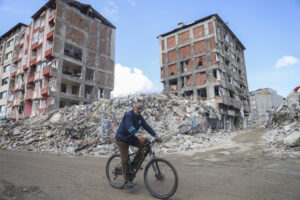
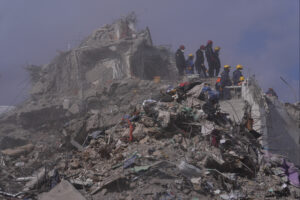
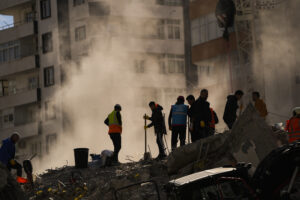
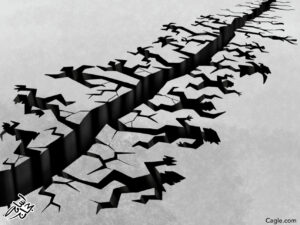
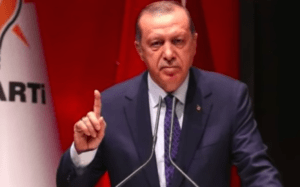


You need to be a supporter to comment.
There are currently no responses to this article.
Be the first to respond.